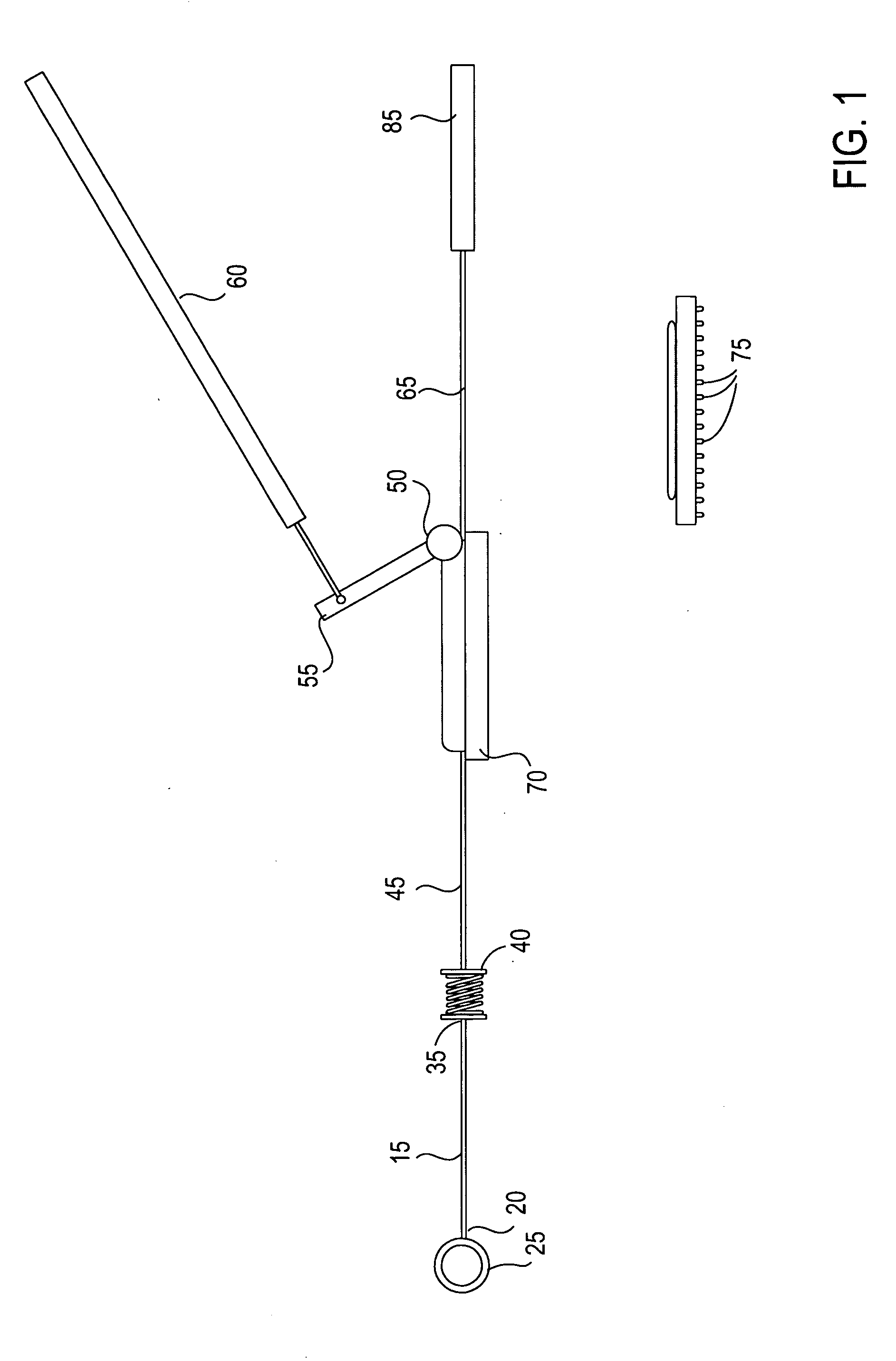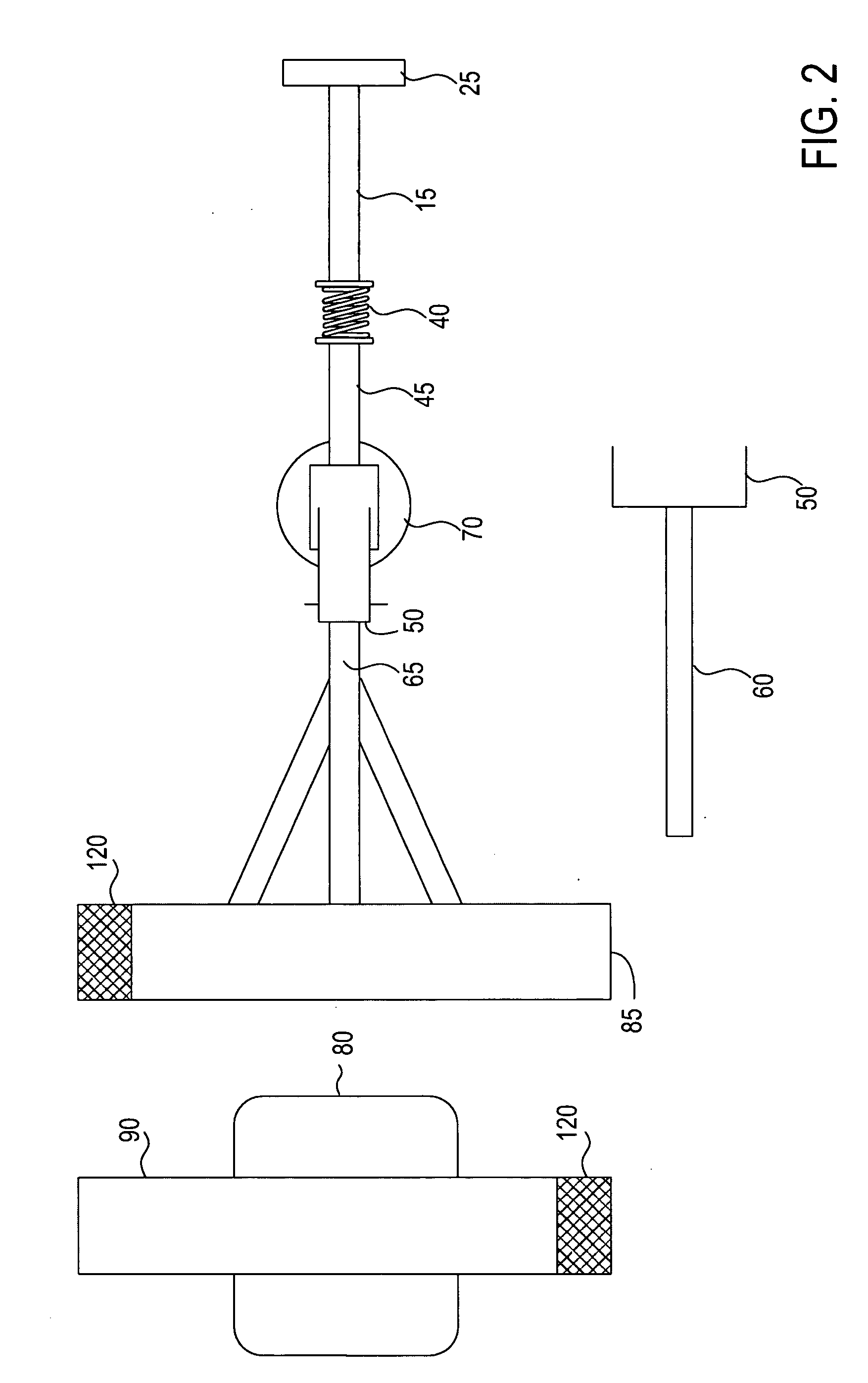Portable lumbar traction device
a lumbar traction device and portable technology, applied in the field of portable lumbar traction devices, can solve the problems of work loss and disability, the most frequent and expensive health care problem, and the force of this magnitude can require special equipment, so as to increase or decrease the tension of the lumbar traction device, increase or decrease the tension, and increase the effect of the spring tension
- Summary
- Abstract
- Description
- Claims
- Application Information
AI Technical Summary
Benefits of technology
Problems solved by technology
Method used
Image
Examples
Embodiment Construction
[0009] The present invention is a tensioning device that is portable and capable of mounting or connecting to a common door frame or fixed structure that selectively applies lumbar traction to a patient. The device of the present invention includes an anchoring section that can be used to secure the device to a door frame or the like, a tension producing section that includes a mechanical spring coupled to a ratchet mechanism for increasing the spring's tension, and a belt or harness section that is worn by the user. The belt or harness can be used in conjunction with a pad or mat that incorporates a frictional surface that resists sliding of the pad or mat on the supporting surface such as a carpet, grass, or floor. Each of the three sections will be discussed in turn.
[0010] The anchoring section of the lumbar device in a first embodiment is a non-resilient nylon tether 15 or belt connected at a distal end 20 to a plastic pipe 25 as shown in FIGS. 1 and 2. The pipe 25 is placed be...
PUM
 Login to View More
Login to View More Abstract
Description
Claims
Application Information
 Login to View More
Login to View More - R&D
- Intellectual Property
- Life Sciences
- Materials
- Tech Scout
- Unparalleled Data Quality
- Higher Quality Content
- 60% Fewer Hallucinations
Browse by: Latest US Patents, China's latest patents, Technical Efficacy Thesaurus, Application Domain, Technology Topic, Popular Technical Reports.
© 2025 PatSnap. All rights reserved.Legal|Privacy policy|Modern Slavery Act Transparency Statement|Sitemap|About US| Contact US: help@patsnap.com



